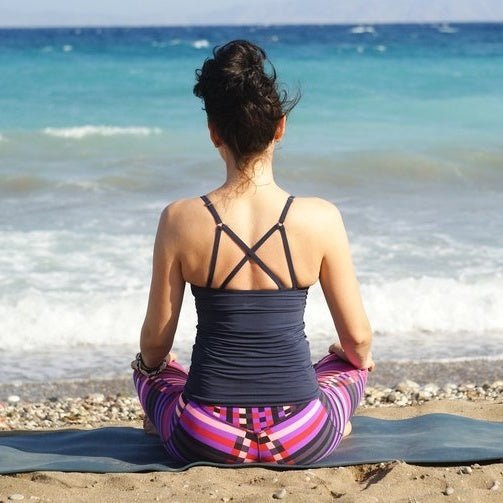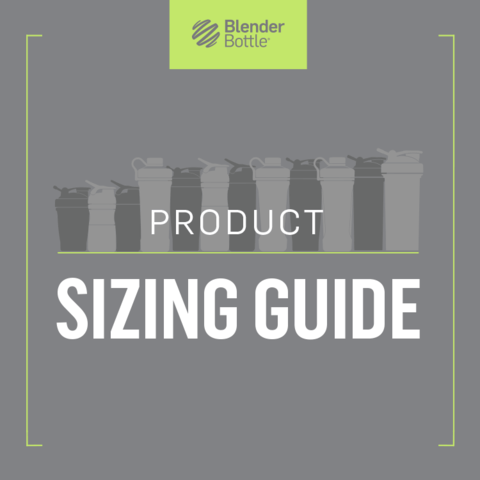
Harnessing the benefits of meditation for better health.
Stop what you're doing. Close your eyes. Take a few deep breaths. Think hard about how to resolve the conflict you're having with your boss. Visualize the family vacation you'll take next month. Focus on the fitness goals you hope to achieve this summer.
You just meditated, right? Not exactly.
Meditation does involve taking a break from distractions and focusing inward, but it goes beyond deep concentration or daydreaming. In fact, meditation is more about calming and quieting the mind, ultimately leading to a different sort of alertness. It's a way of relaxing mentally and inviting positive thought to flow. And while this may sound a bit hokey and ethereal, the many benefits of meditation are increasingly well documented and backed by science.
History of Meditation
Meditation is hardly a new-age concept. Experts agree that meditation has been around for 5,000 years or more, with roots in ancient India, China, and Japan. Meditation teachings began spreading west in the early 1900s, becoming popular during the 60s counter-culture movement, and gaining widespread traction in the 90s when modern mindfulness guru Deepak Chopra became a household name.
In 1979, the University of Massachusetts opened the Mindfulness-Based Stress Reduction Program to treat chronic illness, exploring the therapeutic applications of meditation. Since then, meditation has become more and more integrated into mainstream healthcare. Institutions such as Kaiser Permanente include recommendations for meditation, including guided meditation podcasts and mindfulness-based stress reduction classes, in insomnia treatment protocols.
Benefits of Meditation
It's easy to imagine how meditation may have a positive impact on stress reduction and improved sleep. But the benefits can be far more than simply calming, and in some cases, quite tangible.
A recent Harvard University study showed evidence of changes in the brain's gray matter through meditation, with implications for improved cognitive function. Specifically, the areas of the brain associated with learning and memory showed improved density, whereas decreased gray-matter density was noted in relation to anxiety and stress. Another Harvard study suggests a link between the relaxation response triggered through meditation and significant improvement in gastrointestinal disorders such as irritable bowel syndrome and inflammatory bowel disease. And while meditation is widely believed to have positive psychological benefits for cancer survivors, new research shows a probable link to physiological benefits at a cellular level.
The National Center for Complementary and Integrative Health (a branch of the National Institutes of Health) acknowledges that meditation may be helpful in the treatment of conditions such as high blood pressure, chronic pain, and PTSD, as well as with smoking cessation, and is actively funding further investigation into meditation's health benefits. The health and wellness implications of meditation can obviously improve quality of life, plus potentially lower health care costs.
Types of Meditation
A myriad of approaches to meditation exist, both secular and with religious roots, with a similar purpose of nurturing a relaxed and positive state of mind. The two most commonly practiced styles are known as focused-attention meditation and open-monitoring meditation.
Focused-attention meditation is often referred to with the modern buzzword “mindfulness.” Mindfulness can be as simple as being fully focused on the food you're eating, or on the rain outside your window whatever is happening in the precise present moment. Mindfulness meditation involves focusing on one specific thing often your breathing and refocusing your attention when your mind inevitably wanders.
Open-monitoring meditation is the flipside of that singular focus. Instead, you tune your attention to everything happening around you, but stay in that awareness without reacting to the multiple stimuli.
As your meditation practice develops, so does the level of “thoughtful awareness” that practitioners seek to achieve.
Meditation How-To
So you're sold on giving meditation a try. Here's how to get started:
- Pick a time and place somewhere free from distractions, such as your bedroom or backyard.
- Find a stable and comfortable sitting position. Many practitioners sit cross-legged on a cushion, but if that's not comfortable, try kneeling or sitting in a chair. Sit upright so that you feel comfortable and alert and can breathe easily.
- Ultimately, you'll be able to meditate anywhere on the subway, at your work desk, while lying in bed but some sort of structure or discipline is helpful when you're first adopting the practice.
- In the beginning, it can be helpful to simply pay attention to your breathing, or even count your breaths at the start of each meditation session, to become accustomed to calming your mind.
- Try a guided meditation (see our recommendations below) to help direct and hone your practice.
- Don't beat yourself up when your mind wanders because it certainly will. When your thoughts stray, simply bring your focus back to your breathing.
Turnaround Time
Consistency is key to successful meditation; duration, less so. When you first begin your practice, start small (1 5 minutes). As you develop your practice and become more comfortable relaxing into deeper and deeper meditations, you may find that your stamina increases to 20 60 minutes or more. Still, many modern meditators stick to a 10-minute daily routine.
Most practitioners recommend dedicating the same time every day (for example, first thing in the morning) to make meditation a successful habit. And while it may take time to determine the type and duration of meditation that best suits you, you'll likely feel some stress-relief benefits quite quickly. Other aspects of your health and wellness may also see rapid rewards from a regular meditation practice. The aforementioned Harvard study on brain changes? Those improvements in gray matter were measured after only an eight-week mindfulness program.
Meditation Resources
While you might think that going off the grid would be a smart first step to calming your mind, modern meditation devotees have integrated the practice with technology. Here are a handful of apps to help get you started and guide your meditation practice:
A modern take on mindfulness, designed to integrate on-the-go meditation into your busy life.
A free introductory program called Take 10 teaches meditation basics (10 minutes a day for 10 days); a subscription allows access to all Headspace programs.
Delivers a daily 3-minute meditation, tailored to your current mood, focused on relieving stress and anxiety.
Numerous daily and weekly guided meditation series, plus specific programs to aid with sleep. Bonus: just a visit to the website proves relaxing try it and see for yourself!
Offers an array of guided meditations, music, and talks, with an added emphasis on community (meet-ups, chat groups, and practitioner stats).
Simple and straightforward, the Meditation Essentials program gets you started, and a library of meditations and in-depth courses provides ongoing support.
Do you meditate? How has the practice impacted your life? What additional suggestions do you have for people wanting to dive in and develop their own meditation routine? Share your experience with meditation in the comments below.





Leave a comment
All comments are moderated before being published.
This site is protected by reCAPTCHA and the Google Privacy Policy and Terms of Service apply.